The month’s going by fast isn’t it? The Nintendo Switch 2 is already out now, and Final Fantasy XIV has decided to keep us company with the release of Patch 7.25. Welcome back to Unending Horizons, where I’ll be regularly posting my impressions of both new and old content of Final Fantasy XIV. In this edition of Unending Horizons, we’ll be covering the main content of Patch 7.25, the third iteration of the Field Exploration content series: Occult Crescent!
I still remember the days I grinded in The Forbidden Land, Eureka and the Bozjan Southern Front, and while that was fun in its own way, from what we were able to glance in the Live Letters, Occult Crescent looks to be a combination providing the best of both worlds in a true experience for all players to enjoy. So let us set sail and see what mysteries await us in this weird island.
Disclaimer: The following article may contain spoilers of the new Occult Crescent quests.
Final Fantasy XIV Patch 7.25 – The Island No One Came Back From
To access the Occult Crescent area, players will need to have any Disciple of War or Magic at LV 100, and have completed Dawntrail’s main scenario quest. By doing so, players can talk to the Expedition Messenger, and begin the series of quests that will unlock the area. Because of that first requirement, this means you cannot use this as a ground for leveling your character like you could with the Bozjan Southern Front.
An Unexplored Area

Similar to the Bozjan Southern Front’s main hub, Occult Crescent also possesses one, called the Phantom Village, where you can talk to the NPC to be escorted inside the South Horn area. You can think of this as the Eureka Anemos, where more areas are planned to be opened up as time goes on. Like the Bozjan Southern Front’s Resistance Rank and the Eureka Elemental Rank, players will have a completely separate leveling system while inside the field. This is called the Knowledge Level, and all enemies are balanced around this level. There are three main ways to increase it: FATEs, critical engagements, or defeating enemies.
For FATEs, these will spawn randomly across the field, and can be entered in and out at any time. These typically involve defeating a boss, and your reward is based on how much you’ve contributed to it. Next we have the critical engagements that come from Bozja, where an area on the map will be marked, and players must be inside it when the timer expires to begin.
This brings us to one of my first initial gripes in Occult Crescent. The developers seem to have elected to do critical engagements in the same vein as Eureka. You must walk over to the location yourself to even be able to participate in the engagement. It would’ve been nice if you could just apply and then have the game automatically teleport you to the location, but once I uncovered the whole map, I realized that the teleport locations are placed in such a way that makes it relatively easily to get to them.

Unlike its previous iterations, Occult Crescent does not have any locked coffers that require you to take them to a locksmith in the base camp. Instead, bronze and silver chests are spread all across the map, and I want to give a highlight to the silver chests because…my god, do they have good loot in them! In just a few days, I had a bunch of mounts, minions and hairstyles that I managed to obtain without much effort. These chests manage to tickle those dopamine rushes, and make finding them worth it.
The Phantom Job System

One of the neat systems of Occult Crescent are Phantom Jobs. As their name implies, Phantom Jobs are essentially extra jobs that players can take upon in addition to their main job. Each job will add a couple of extra actions that can be assigned to your hotbar. For example, the Phantom Chemist job adds several healing skills that can be used, and the Ranger job adds a skill that buffs your critical hit rate. These jobs also operate on a separate EXP bar from your Knowledge Level, but the way you upgrade them is pretty much the same.
My favorite jobs were quite possibly the Phantom Cannoneer and the Phantom Samurai. The former can deal some really high damage, and as a bonus, apply status effects to enemies such as Blind or Paralysis. And the Phantom Samurai also has a skill that can withstand physical blows, and has a 10% chance of instantly killing an enemy. Still, I definitely recommend getting all the jobs leveled up, because for each one you do, you’ll obtain a stack of Phantom Mastery, which increases your damage and healing potency while inside the instance.
Honestly, while I did enjoy the Phantom Jobs, leveling them up can be super boring sometimes, for the lack of a better word. I was playing with a group of friends and during the first week of the content’s release, I only managed to get four jobs leveled to their maximum, and it felt like a slog with each critical encounter taking almost 20 minutes each time.
The Phantom Weapon Relic

With the implementation of Occult Crescent, that means it’s time for the Relic Weapon grind. In the previous expansion, the relic was perhaps the easiest grind ever, which upset a lot of the player base. And Naoki Yoshida assured us that he was listening, and that the Dawntrail relic would not be as easy of a grind. So, what did we end up getting? Well, welcome back A Realm Reborn relic weapons! …Sorta.
For the first phase of your weapon, you must collect six types of demiatma crystals — and not just one, but three of each. Now, here comes a twist. Unlike past Field Exploration relics, Square Enix has implemented an alternate way to obtain this relic for yourself. Usually you’d be required to get them through Occult Crescent, but all of the demiatmas can be obtained by doing FATEs across all currently available Dawntrail regions.

The drop rate is…abysmal. You can grind for hours and only have one or two crystals drop, or sometimes you might be flooded with crystals that are of the wrong color. It’s quite a gamble that can feel very irritating at times. But thankfully, you will only need to obtain these crystals once. Afterwards, any subsequent weapons will only require that you give Gerolt, the blacksmith, a payment of 1500 Allagan Tomestones of Heliometry is needed. It’s not unthinkable that a similar grind might crop up for the later tiers of this relic, and honestly, I do feel it has the potential to become a good weapon for players to use down the line.
Final Fantasy XIV Patch 7.25 Is a Mixed Bag for Me
Occult Crescent did impress me at first, being the main attraction of Final Fantasy XIV Patch 7.25. Although it introduced some neat ideas of its own, it also introduced an equal amount of frustration, especially when I considered how Bozja nailed the execution in many ways. While I vastly enjoy crafting more than beating monsters up, it’s not often that I’m left with mixed feelings on a new type of content.
Still, Dawntrail’s post-content offerings so far have been so vast and massive, that it means there is something for all types of players, and evidently, if interviews are anything to come by, there’s still a lot to explore, especially with the main scenario. I have my hopes that we also see the game come to Switch 2, because it would be cool to be able to check out the game wherever I want.
Final Fantasy XIV: Dawntrail is available now for PlayStation 4, PlayStation 5, Xbox Series X|S, and PC via Steam.


